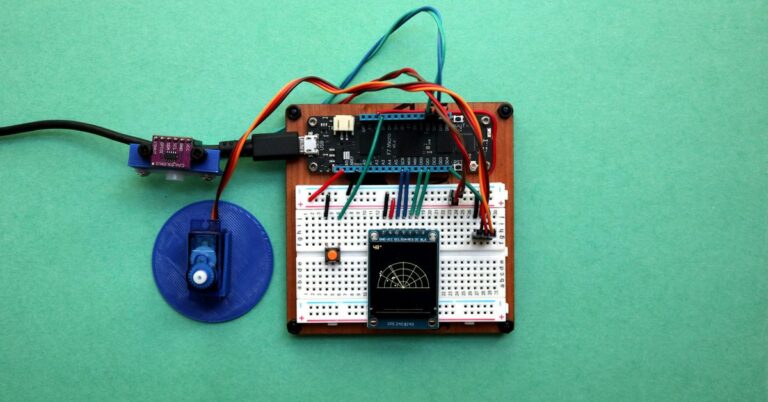Revolutionize Your Routine: How Fitness Tech is Changing the Game for Everyday Athletes
Have you ever found yourself staring at the gym equipment, wondering if your workout routine is stuck in a time warp? Or perhaps you’ve wrestled with the idea of investing in the latest fitness gadgets, only to wonder if they’re worth the hype? Welcome to the world of fitness technology—a realm that’s not just for elite athletes anymore but is transforming the way everyday folks get fit. It’s as if the gym has joined forces with Silicon Valley, and the results are nothing short of revolutionary.
In this article, we’re diving deep into the ways fitness tech is reshaping our routines and making strides for everyday athletes. From smartwatches to interactive apps, let’s explore how these innovations are changing the game. And yes—there will be personal anecdotes, a sprinkle of humor, and maybe even a few surprises along the way.
The Rise of Fitness Technology
Let’s take a stroll down memory lane. I remember back in the day when the pinnacle of fitness tech was a basic pedometer. You know, the kind that would count your steps and nothing more? Fast forward to today, and we find ourselves amidst a digital renaissance in fitness. It seems like everyone’s wrist is adorned with a smartwatch or fitness tracker, promising to optimize workouts and help us achieve our health goals.
According to a report by Grand View Research, the global fitness app market size was valued at over $4 billion in 2020 and is expected to grow significantly in the coming years. This rapid evolution isn’t just about flashy gadgets; it’s about integrating technology into our everyday lives to enhance our physical well-being. But what does this really mean for the average person who’s just trying to make it through a workout without collapsing in a heap?
Wearable Tech: More Than Just Fashion Statements
Let’s start with wearables—those nifty gadgets that promised to change the way we exercise. I can’t help but chuckle when I think of my friend Dave, who bought a smartwatch solely to impress his gym crush. Spoiler alert: it didn’t work, but it did help him track his heart rate and steps. Wearable technology has evolved beyond mere aesthetics, becoming an essential part of many athletes’ routines.
Here are some key benefits of wearable fitness tech:
- Real-time feedback: Instant data allows users to adjust their workouts on the fly. If you’re running too slow or lifting too light, your device will let you know.
- Goal tracking: Setting and monitoring goals has never been easier. Whether it’s achieving a target weight, running a certain distance, or even completing a number of workouts per week, wearables help keep you accountable.
- Health monitoring: Many devices can track heart rate, sleep patterns, and even stress levels, giving users insights that were once reserved for medical professionals.
But hold on—before you rush out to buy the latest model, consider this: while some studies suggest that having a wearable can increase motivation, it’s essential to remember that fitness is personal. What works for one person may not work for another. I’ve seen folks become overly reliant on their devices, almost treating them as oracles of fitness wisdom. Remember, they’re just tools, not magic wands!
Smartphone Apps: Your Personal Trainer in Your Pocket
Ah, the smartphone—an indispensable companion for many of us, whether we’re scrolling through social media or binging on the latest show. But beyond the endless cat videos, smartphones have become powerful fitness allies. Fitness apps have exploded in popularity, catering to a wide array of preferences and goals.
From running and cycling to yoga and strength training, there’s an app for just about every workout style. Some of my favorites include:
- MyFitnessPal: A comprehensive app for tracking meals and workouts, making it easier to stay on top of your nutrition.
- Strava: Ideal for cyclists and runners, this app not only tracks your performance but also connects you with a community of fellow athletes.
- Peloton: Not just for the bike anymore, Peloton offers a variety of classes, including strength training and yoga, right from the comfort of your living room.
One particularly interesting feature of many fitness apps is gamification. Users can earn points, badges, and other rewards for completing workouts or hitting goals. It’s like playing a video game, but instead of leveling up to conquer a virtual world, you’re leveling up your fitness. I once participated in a 30-day fitness challenge through an app, and let me tell you, the competitive spirit that ignited within me was nothing short of electrifying. Who knew I had it in me to turn my living room into a makeshift gym?
Virtual Reality: A New Dimension of Fitness
Now, let’s talk about the future. Virtual reality (VR) has typically been associated with gaming, but it’s making strides into the fitness arena as well. Imagine donning a headset and finding yourself in a virtual world where you can box, dance, or even climb mountains—all while breaking a sweat. It sounds like something out of a sci-fi movie, but it’s becoming a reality.
Companies like Oculus and Beat Saber have taken the lead in this innovative space, making workouts feel like an adventure rather than a chore. I had the chance to try a VR fitness game recently, and I’ll admit, I was skeptical at first. However, within minutes, I was swinging my arms and dodging obstacles as if I were in a video game. It was a workout disguised as fun, and I left the session feeling energized.
While VR fitness is still in its infancy, it holds great promise. Some potential benefits include:
- Engagement: The immersive experience keeps users interested and motivated, reducing the likelihood of boredom during workouts.
- Accessibility: For those who may feel intimidated by traditional gym environments, VR can provide a comfortable space to exercise.
- Community: Many VR fitness platforms allow users to connect and workout with friends or even meet new people in virtual spaces.
Of course, it’s worth mentioning that VR isn’t for everyone. Some might find the experience disorienting or simply prefer the more traditional forms of exercise. However, for those willing to step (or leap) outside their comfort zones, VR fitness could be a game changer.
Smart Equipment: The Future of Home Workouts
With the rise of home workouts, smart equipment has become increasingly popular. Gone are the days of dusty dumbbells sitting in the corner of the room (although I still have a pair of those lurking under my bed). Now, we have smart weights, connected treadmills, and even smart mirrors that guide you through workouts.
Take, for instance, the Tonal system—a smart home gym that uses digital weights and provides personalized coaching. It’s like having a personal trainer in your home, guiding you through each exercise and adjusting your routine based on your progress. I can’t help but daydream about having one of these in my living room, but then I remind myself of the hefty price tag. Maybe I’ll just stick to my makeshift weights for now.
In addition to Tonal, other brands like Mirror and Echelon have entered the market, offering a variety of fitness solutions for those looking to work out at home. These devices come with their own unique benefits:
- Convenience: Working out from home saves time and eliminates the need for commuting to the gym.
- Customization: Many smart devices adapt workouts to your fitness level, ensuring you’re always challenged without overexerting yourself.
- Community: With live classes and virtual communities, home workouts can still feel social.
However, it’s crucial to recognize that while smart equipment can enhance your workouts, they should complement—not replace—traditional fitness approaches. A well-rounded exercise routine often includes a mix of strength training, cardio, and flexibility work that can’t always be replicated through a screen.
Nutrition Meets Technology: The Role of Health Tech
Let’s not forget about the culinary side of fitness. Nutrition is a cornerstone of any successful fitness routine, and technology is stepping up to the plate (pun intended). Health tech isn’t just about tracking calories but also about understanding nutritional needs, meal planning, and even food quality.
Apps like Noom and Lifesum help users track their eating habits while providing personalized meal plans. I’ve often found myself lost in the world of nutritional apps, trying to decipher the difference between “clean eating” and “flexible dieting.” (Spoiler: it’s a slippery slope.) These apps can make the process less daunting and more structured.
Moreover, smart kitchen gadgets are revolutionizing meal prep. Imagine a smart scale that measures your ingredients while offering nutritional information in real time. Or how about a connected slow cooker that you can control from your phone? It’s a busy person’s dream come true! But, as with any technology, it’s essential to remember that convenience doesn’t excuse unhealthy choices.
Challenges and Considerations
As with any wave of innovation, the integration of fitness technology into our routines comes with its own set of challenges. For starters, there’s the overwhelming flood of information and options. I can’t tell you how many times I’ve been paralyzed by choice at the app store, wondering which one will work best for me. It’s like standing in front of a cereal aisle at the grocery store—so many choices, yet you still leave with the same old box of Corn Flakes.
Moreover, not all technology is created equal. Some devices can be expensive, and not everyone has the budget for high-end equipment. Additionally, there’s the risk of becoming overly reliant on technology, potentially leading to a disconnect between our bodies and our workouts. It’s vital to strike a balance between utilizing technology and listening to our own physical cues—something I still remind myself to do, especially when I’m tempted to push through pain just to hit a certain number.
Conclusion: Fitness Tech is Here to Stay
As we’ve explored, fitness technology is not just a fleeting trend; it’s reshaping how everyday athletes approach their routines. From wearables that track our every move to apps that provide personalized guidance, the integration of tech into fitness is making it more accessible, efficient, and engaging. It has the potential to revolutionize our approach to health and wellness, but it’s crucial to remember that while technology can enhance our workouts, it shouldn’t replace the fundamentals of fitness.
So, whether you’re a seasoned athlete or just starting out, consider how fitness tech can complement your journey. As I lace up my sneakers, I often reflect on how far we’ve come—and how exciting it is to be part of this evolving landscape. Now, if only someone could invent a gadget that makes post-workout stretching just as thrilling as the workout itself!












